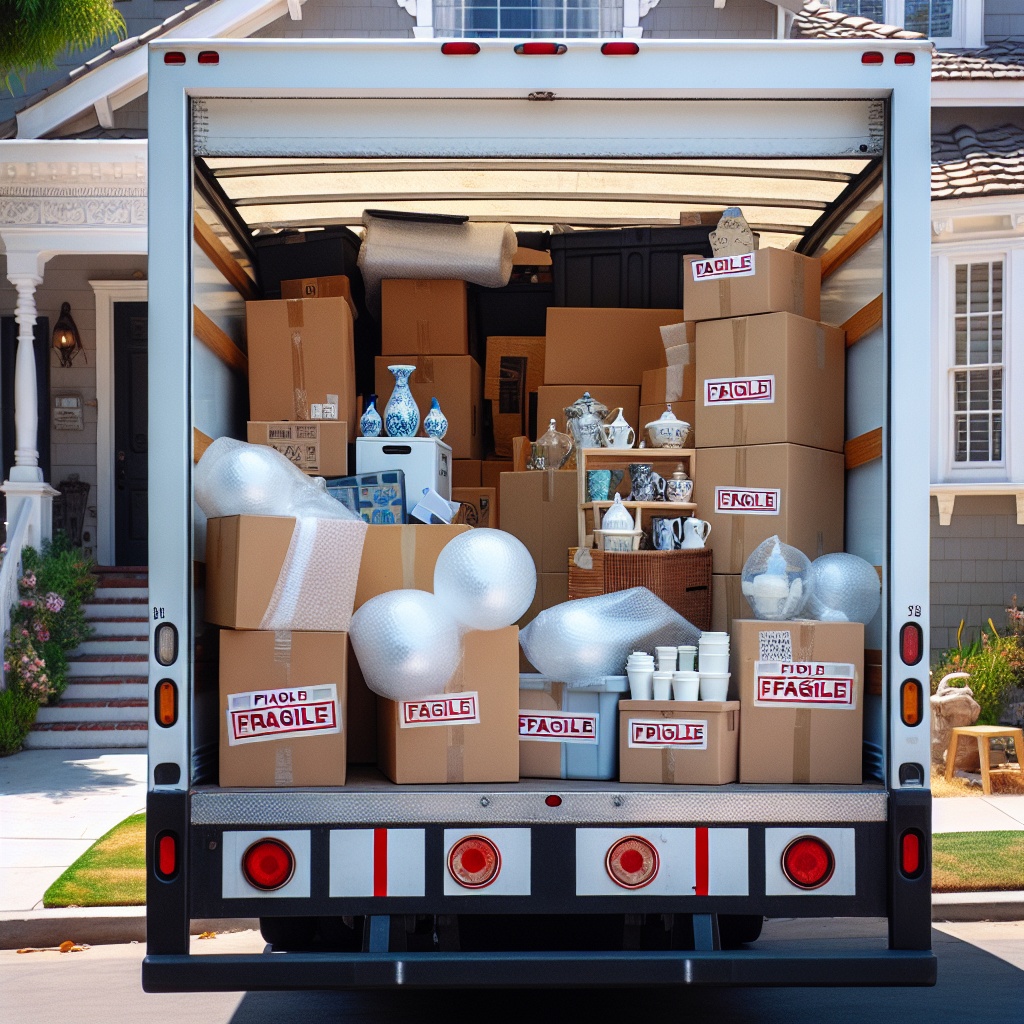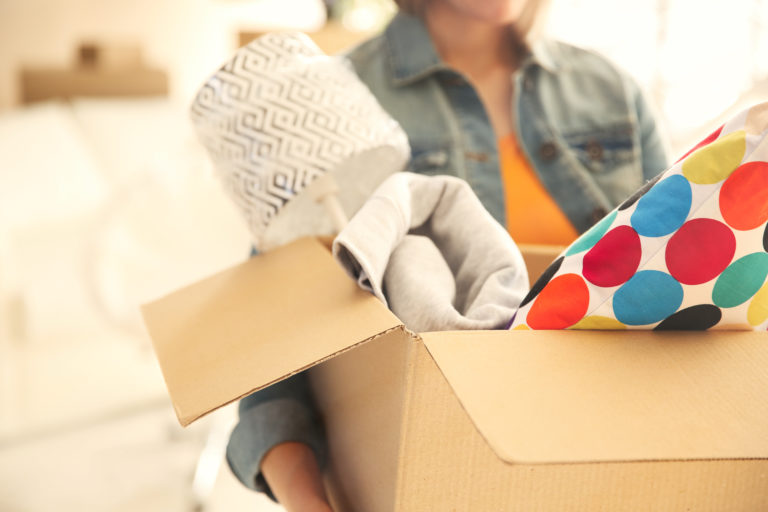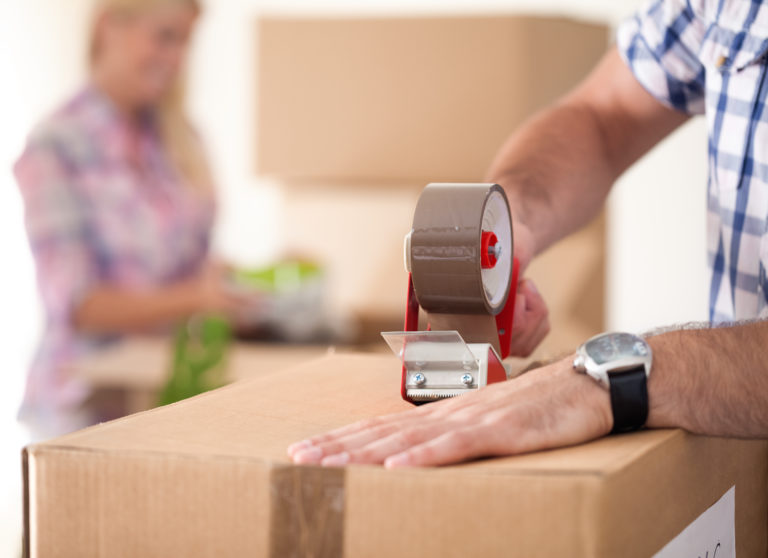When preparing for a move, the safety of your delicate belongings often takes priority due to their sentimental or monetary value. Having a strategy for packing fragile items can mean the difference between them arriving intact or in pieces. Special care is needed for glassware, artwork, and electronics, which are susceptible to cracks and scratches and can also suffer damage from excessive movement or pressure.
Your approach to packing should start with an assessment and inventory of your delicate items. This not only aids in organization but also ensures that none of your valuables are overlooked. Using the right materials is crucial; bubble wrap, packing paper, foam inserts, and strong packing tape will secure your items. For glassware and breakables, wrap each piece individually and line the boxes with cushioning material.
Electronics and artwork require a different tactic as they are prone to damage from static, dust, and impact. Use original packaging where possible since it is designed to protect the item. If the original packaging isn’t available, secure electronic screens and art surfaces with a protective cover, such as bubble wrap, and fill any voids in the boxes to prevent movement during transit. Always ensure boxes are firmly sealed and clearly labeled on multiple sides to indicate handling instructions.
Packing Materials Overview
When preparing your delicate belongings for a move, the quality and type of packing materials you choose are critical to ensuring their safety during transit.
Choosing the Right Boxes
Your choice of boxes should be determined by the items you are packing. Glassware and electronics require sturdy cardboard boxes that are not prone to collapsing. Boxes should be ideally double-walled for enhanced durability and sizable enough to accommodate the item and additional protective materials without causing compression.
- Small to medium-sized boxes: Best for glassware and small electronics.
- Specialty boxes: Use for oversized or irregularly shaped items.
Protective Wrapping and Cushioning Materials
Bubble wrap is essential for providing a protective layer around each fragile item. Wrap each piece individually, ensuring coverage on all sides and corners. Consider acid-free packing paper for fine art to prevent damage to delicate surfaces. Additionally, foam peanuts can fill void spaces within the box, preventing items from shifting.
- Bubble Wrap: Secure with packing tape after wrapping.
- Packing Paper: Use liberally to wrap and pad the bottom and top of the box.
- Foam Peanuts: Pour into the box after the item is placed inside to fill gaps.
Securing Packing Materials
You must secure everything with high-quality packing tape to keep your wrapped items from unwrapping or protective materials from shifting. Wrap the tape around the box at least once to reinforce the bottom and top seams, and apply the tape over the bubble wrap to keep it in place around your items.
- Packing Tape: Use a dispenser for ease and ensure it’s at least 2 inches wide.
- Securing Technique: Tape across all openings and box edges to reinforce.
Packing Techniques for Fragile Items
When packing fragile items, specific techniques must be used to protect them during transit. You must focus on proper wrapping, padding, and careful loading.
Glassware and China
Glassware and China require careful handling. Here are some specific steps to take:
- Wrapping: Individually wrap each piece in bubble wrap, securing the wrapping with packing tape.
- Boxing: Use double-walled boxes for extra protection.
- Padding: Fill gaps in the box with crumpled packing paper or foam peanuts to prevent movement.
Remember to create a cushioned layer at the bottom of the box before placing your wrapped items inside.
Artwork and Antiques
Artwork and antiques need customized protection due to their unique shapes and sizes.
- Padding: Protect framed pieces with bubble wrap and secure them with tape.
- Boxing: Utilize specialty boxes that accommodate various sizes of artwork and mirrors.
- Stabilizing: Package delicate parts like lampshades or ornamentation separately.
Label boxes as “Fragile” and keep them upright during loading and unloading.
Electronics and Appliances
Electronics and appliances are not just breakable; they are often valuable.
- Original Packaging: Use the item’s original packaging for the best fit and protection.
- Sealable Bags: Remove any small parts or wires and store them in sealable bags labeled with the contents and device they belong to.
- Stabilizing: Wrap monitors or screens with anti-static foam and secure them with packing tape.
Take a photograph of your setup before disassembling electronics to aid with reassembly.
Transportation and Loading Tips
When transporting fragile items, ensuring their safety demands attentiveness to how they are loaded and secured in the moving truck. Integrating proper protection methodologies minimizes the risk of damage during the transition.
Loading Boxes Correctly
You must methodically load your boxes into the truck to prevent shifting and subsequent damage. Always place heavier boxes on the bottom and stack lighter boxes on top. This helps maintain the balance and integrity of your fragile items. Use a systematic approach:
- Bottom layer: Heaviest boxes with sturdy items within.
- Middle layers: Moderately weighted boxes, ensuring no heavy items can crush more delicate ones beneath.
- Top layer: Lightest boxes, ideally containing your most fragile items wrapped in bubble wrap or foam sheets.
Securing Items in the Moving Truck
Once loaded, it’s crucial to secure the boxes to prevent movement while the truck is in motion. Utilize straps and padding to stabilize the boxes. Insert foam sheets and additional padding between boxes and the truck’s sides to fill gaps and absorb shock. Follow these steps:
- Place straps around rows of boxes to anchor them to the side rails.
- Wedge padding or folded blankets between the boxes and truck walls.
- Fill voids with foam sheets to stop items from jostling against each other.
Insurance and Protection
Before moving day, verify that your moving company offers insurance options for your fragile items. Understand the level of protection each policy provides against damage during transport. Label boxes as “Fragile” to alert movers to handle with care, and consider these points:
- Review: Check the insurance policy’s terms to ensure it covers specific fragile items.
- Document: Take photos of your items before packing to serve as evidence in case of damage claims.
- Communicate: For extra caution, ensure the movers know the boxes containing fragile items.
Post-Move Handling
Once your fragile items have arrived at their destination, handling them during unpacking and storing is as critical as the pre-move packing process. Proper care and attention are needed to ensure your belongings remain undamaged after the move.
Unpacking Delicates
- Begin by choosing a clean, uncluttered space to unpack your fragile items. Ensure the space is free from potential hazards that could lead to breakage.
- Carefully remove the packing tape and open boxes labeled ‘Fragile.’ Do this gently to avoid any sudden movement that might harm the contents.
- Remove each item slowly, one at a time, and inspect it for any damage that may have occurred during transit.
Storing Fragile Belongings
- Identify an appropriate storage area for your delicate items. This area should be dry, cool, and away from high-traffic parts of your home or workspace.
- For glassware and China, consider lining shelves with soft padding and positioning each piece with adequate space in between to prevent any clinking or pressure.
- Electronics should be stored away from direct sunlight and extreme temperatures to avoid damaging the components. If original packaging is unavailable, use anti-static bubble wrap for additional protection.
Remember, the attention and care you provide during the post-move handling of your fragile items will contribute significantly to their preservation.





